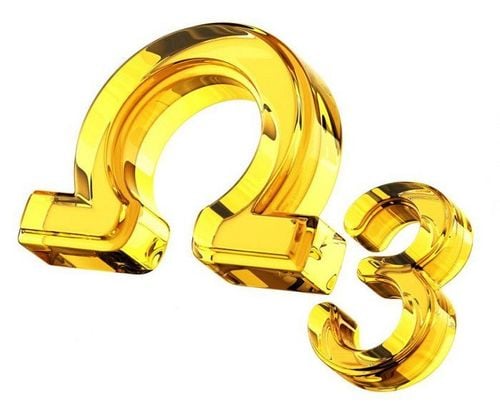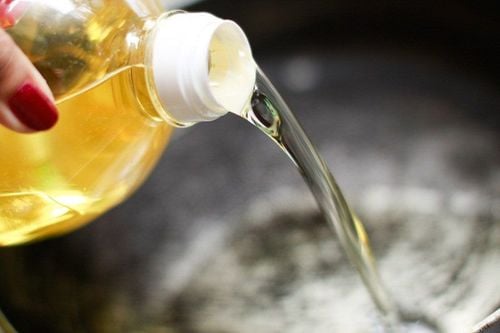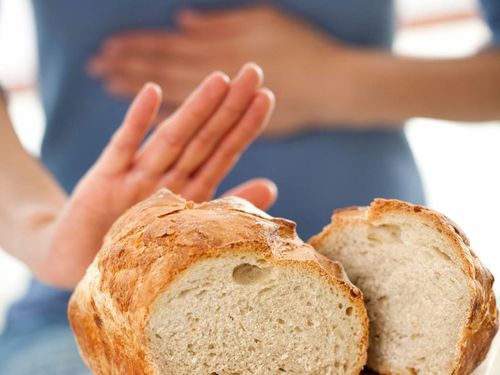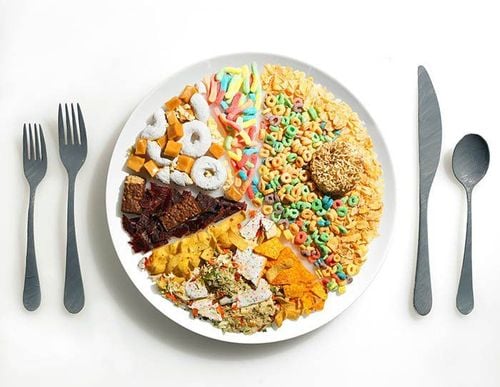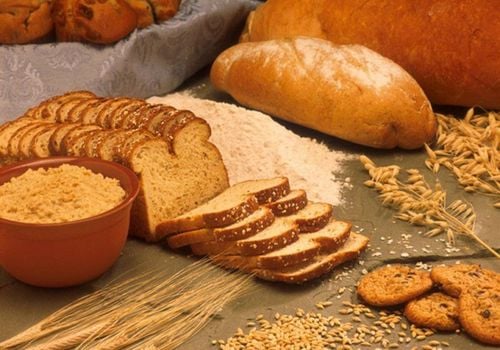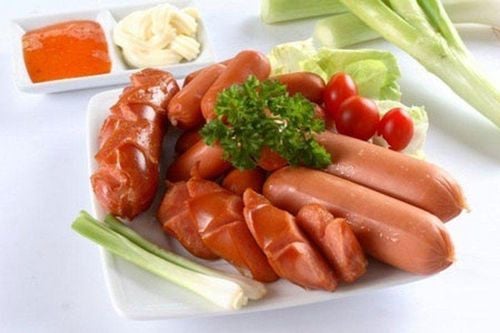This is an automatically translated article.
To follow a healthy diet means that you will not choose foods with empty calories to load into the body. Foods that contain empty calories will have little nutritional value. Instead, these foods give your body most of the solid fat and added sugars, which can lead to weight gain and nutritional deficiencies.
1. What are Empty Calories?
Foods and beverages that do not contain significant amounts of nutrients, but are high in calories, are said to have "empty calories". These are mainly foods and drinks with high sugar, fat and alcohol content with little or no other nutritional value.
Empty calories are considered calories that come from added sugars and solid fats, as well as some processed oils. Includes:
Desserts containing carbohydrate content, such as: Cakes, cookies, cookies, doughnuts, muffins, granola bars, etc. Beverages with added sugars, including: Sodas, energy drinks and juices Candy bars, chocolate candies and hard candies Certain types of meat-based food products, including: Bacon, hot dogs and hotdogs Some products contain full fat content, such as: Butter, raw milk and cream Processed cooking oils such as: Soybean and rapeseed oils Condiments, which can include a some condiments contain added sugars and solid fats such as: Ketchup and barbecue sauce Fast foods include: Burgers, or sandwiches, pizza, fries, etc. Alcohol Fats and added sugars, two ingredients that make the empty calories in these foods taste good, can make people crave them. There are 4 calories per gram of sugar, 9 calories per gram of fat and 7 calories per gram of pure alcohol. When the body uses a lot of foods and drinks with empty calories, it can lead to weight gain and nutritional deficiencies. For example, a person who eats a lot of empty calories may not be getting enough:
Vitamins Minerals Proteins Essential Fatty Acids Fiber
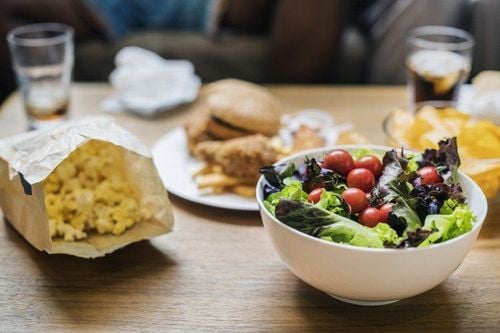
Calo rỗng được coi như những calo đến từ đường bổ sung và chất béo rắn
2. How to identify foods that contain empty calories
To know which foods contain empty calories, you can read food labels. You can search for information on solid fats and added sugars to determine if a food is on the empty calorie or food list.
Solid fats, fats that stay solid even at room temperature. These include things like butter. Added sugars, usually in the form of sugars or syrups, are added to foods as they are processed. These ingredients can make food taste good. However, even if a food tastes great, it may not provide your body with the nutrients it needs to thrive.
“Empty” literally means “contains nothing”. When it comes to food that contains empty calories, it means that the food contains little or no essential vitamins or minerals. In other words, these foods in addition to providing no nutritional value to the body, they provide the body with a relative amount of calories to create excess weight.
3. Some dishes contain empty calories and should be avoided
Prepackaged foods such as: Packaged cakes, cookies and doughnuts contain both added sugars and solid fats. Drinks that contain empty calories such as soda, sports and energy drinks, and fruit drinks contain added sugar. Cheese, ice cream, and other high-fat dairy products contain good amounts of solid fats. Meat-based foods such as sausages, hot dogs, bacon and ribs contain solid fats. Fast food such as pizza, or burgers, fries, milkshakes, etc. often contain in the composition both added sugars and solid fats. Hard candy and candy bars may contain both added sugars and solid fats.
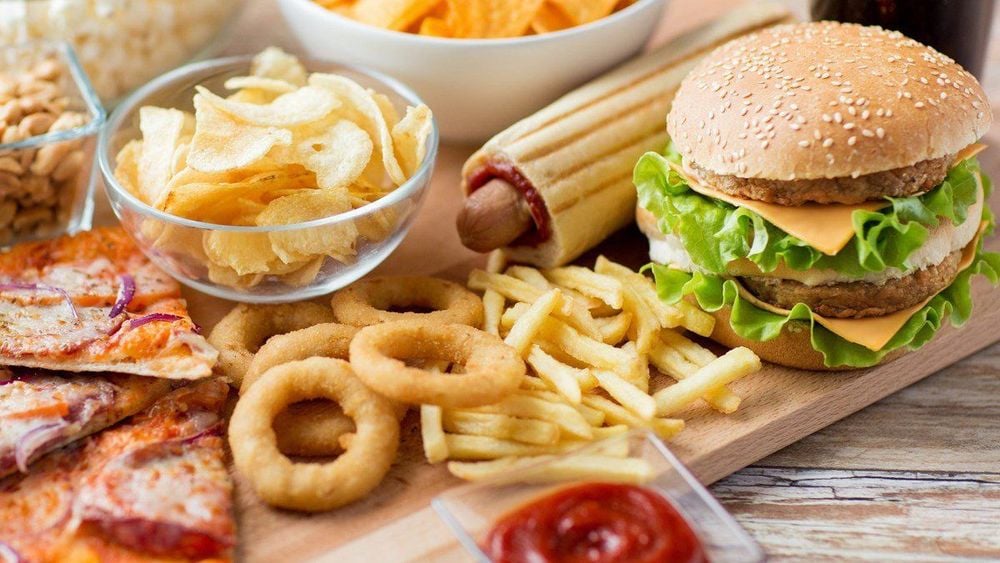
Nên tránh các loại thức ăn nhanh
4. Food to eat instead
Experts recommend that people get about 30% of their daily calories from fat and consume no more than six to nine teaspoons of added sugars.
The foods that make up a healthy diet are mainly fresh fruits and vegetables, or foods that do not contain added fats and sugars.
Some healthy foods
Fresh fruits include: Apples, oranges, berries, bananas, melons Vegetables, fresh or frozen include: Carrots, green leafy vegetables, broccoli, beets Five Whole grains include: Whole wheat bread, brown rice, whole-grain pasta Lean proteins include: Eggs, beans, fish, nuts, poultry and other lean meats Legumes include : Beans and lentils Milk includes: Low-fat milk, cheese and yogurt Some of these foods that don't contain empty calories, such as raw, are not labeled. For these cases, you can search for terms regulated by the Food and Drug Administration (FDA) such as no added sugar or low fat or low calorie foods. When this information is available, the food must meet certain guidelines which means that the food has not been subjected to any special processing, modification or formulation.
Some people use a helpful strategy when trying to eat more healthy foods than “eating the rainbow”. This mode is actually quite easy to implement. Try to apply the diet with a red-orange color day and eat a lot of foods such as: Apples, oranges and carrots. The next day can use: Yellow peppers, yellow squash, green beans and kale. Blueberries, purple potatoes, and raspberries are good choices for the rest of the rainbow color spectrum. Don't forget to opt for white, though - foods like bananas, cauliflower and beets are also packed with nutrients and flavor.
You probably have empty calorie foods in your pantry. The United States Department of Agriculture explains that it's OK to have some empty calories in your diet. However, what exactly will the empty calories be? Then the answer is that a diet and food choices must ensure moderation is the key to safety. Try limiting yourself to 75 calories or less of these foods per day. You may want to start eating empty calorie foods less and more often, such as once a week or in smaller portions.
Furthermore, you can also try swapping out empty calories when choosing food for healthier options:
Use low-fat cheeses instead of full-fat varieties Try plain yogurt with fruit instead of sweetened yogurt Use unsweetened cereals versus sweetened varieties Use plain water instead of sugary soft drinks and fruit drinks Chew high-fiber popcorn instead of cookies Use dehydrated veggies, crunchy beans or dried seaweed instead of chips Making a smart - and delicious - swap can also help you fill up on nutrients and satisfy cravings. For example, you might like the taste of a strawberry milkshake. Foods with dairy ingredients and fresh fruit contain both solid fats and added sugars. To get a better feel for using foods that provide the nutrients your body needs, consider switching to a fruit smoothie made with healthy ingredients. Strawberry-banana milkshake recipe has only 200 calories per serving. It also boasts 7 grams of protein, 7 grams of fiber and just 1 gram of fat. Although it contains 18 grams of sugar, they come from natural sources rather than being added to syrup.
Please dial HOTLINE for more information or register for an appointment HERE. Download MyVinmec app to make appointments faster and to manage your bookings easily.
Reference source: healthline.com




